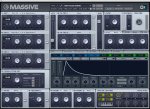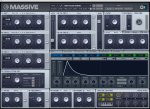0dbfs is nominally equivalent to a high spl, set by how you are calibrating your meters to spl: e.g.
k-20 sets 0dbfs = 103dbspl and therefore -20dbfs = 83dbspl =0dbRMS, which gives you headroom equivalent to 100 times as loud
k-14 sets 0dbfs = 97dbspl and therefore -14dbfs = 83dbspl =0dbRMS, which gives you headroom equivalent to 25.1 times as loud
k-12 sets 0dbfs = 95dbspl and therefore -12dbfs = 83dbspl =0dbRMS, which gives you headroom equivalent to 15.8 times as loud
i.e. most youtube tutorials have it wrong because they are working backwards from 0dbfs instead of working towards 0dbfs
when mixing we should be focused on achieving 0dbrms not 0dbfs, little bit above is fine but pushing into the single digit dbfs range is only causing problems when mixing
consider this from another perspective: summing signals (which is what mixing is) will always result in a higher signal never a smaller one.
In any k- metering system
If you start at -3dbfs and another also at -3dbfs the result is 0.01dbfs i.e. you are already clipping without getting past two signals
Start at -12dbfs and add another also at -12dbfs and you get -8.99dbfs;
add another -12dbfs signal to those two and you get a sum of -7.23;
yet another = -5.98;
another gives us -5.01;
another, -4.22,
another, -3.55;,
another, -2.97,
another -2.46;
another, -2.00;
another -1.59;
another, -1.21;
another, -0.86;
another, -0.54;
another, -0.24;
another, 0.04dbfs and we are again clipping: 15 tracks without clipping (-0.24dbfs), 16th track pushes us into clipping.
Start at -14dbfs and do the summing it takes 26 tracks before we exceed 0dbfs at 0.15dbfs, 25 tracks without clipping and a headroom of
Start at -20dbfs and do the summing: it takes 101 tracks before we exceed 0dbfs at 0.04dbfs, 100 tracks at -20dbfs or less sums to 0.00dbfs
(The math to do this summing is
dbcombinedSignal = 10x log10(10[sup](dbsignal1)/10)[/sup]+10[sup](dbsignal2)/10[/sup]).
For each new track add the previous result to the current track peak to get the new summed value of peaks.)
now let's go back to the headroom figures I gave above for the various k-metering systems:
k-12 has a headroom of 15.8 times as much (12db)
k-14 has a headroom of 25.1 times as much (14db)
k-20 has a headroom of 100 times as much (20db)
See anything striking about those headroom figures? that's right it is equivalent to the number of tracks with that peak value that can be summed before we exceed 0dbfs
Whilst we can fudge the figures by dropping the master buss fader (a common enough practice in analogue days), it doesn't change the final outcome.
Our approach to average levels per track dictates exactly how many tracks we can have in a mix before it begins to clip the output


